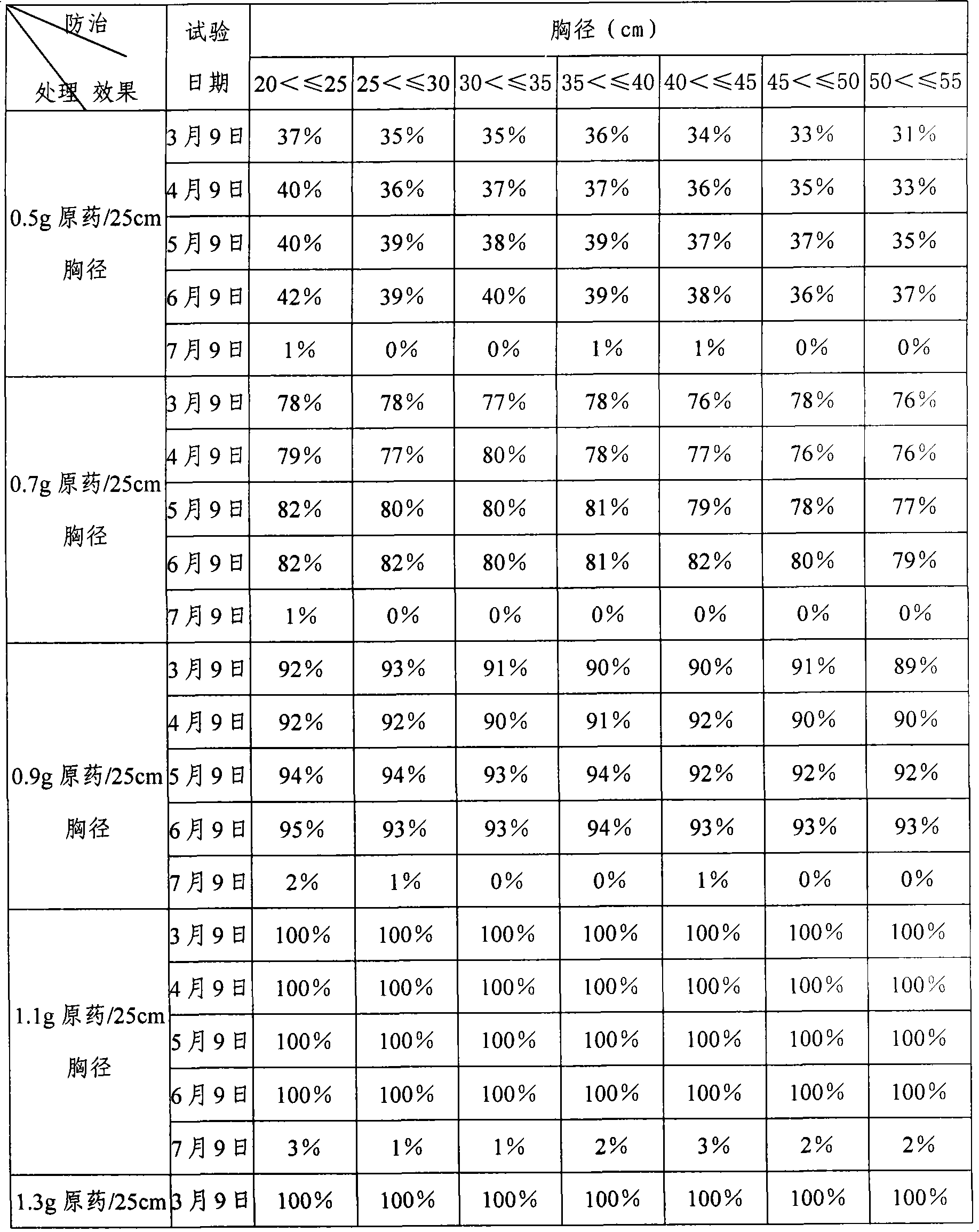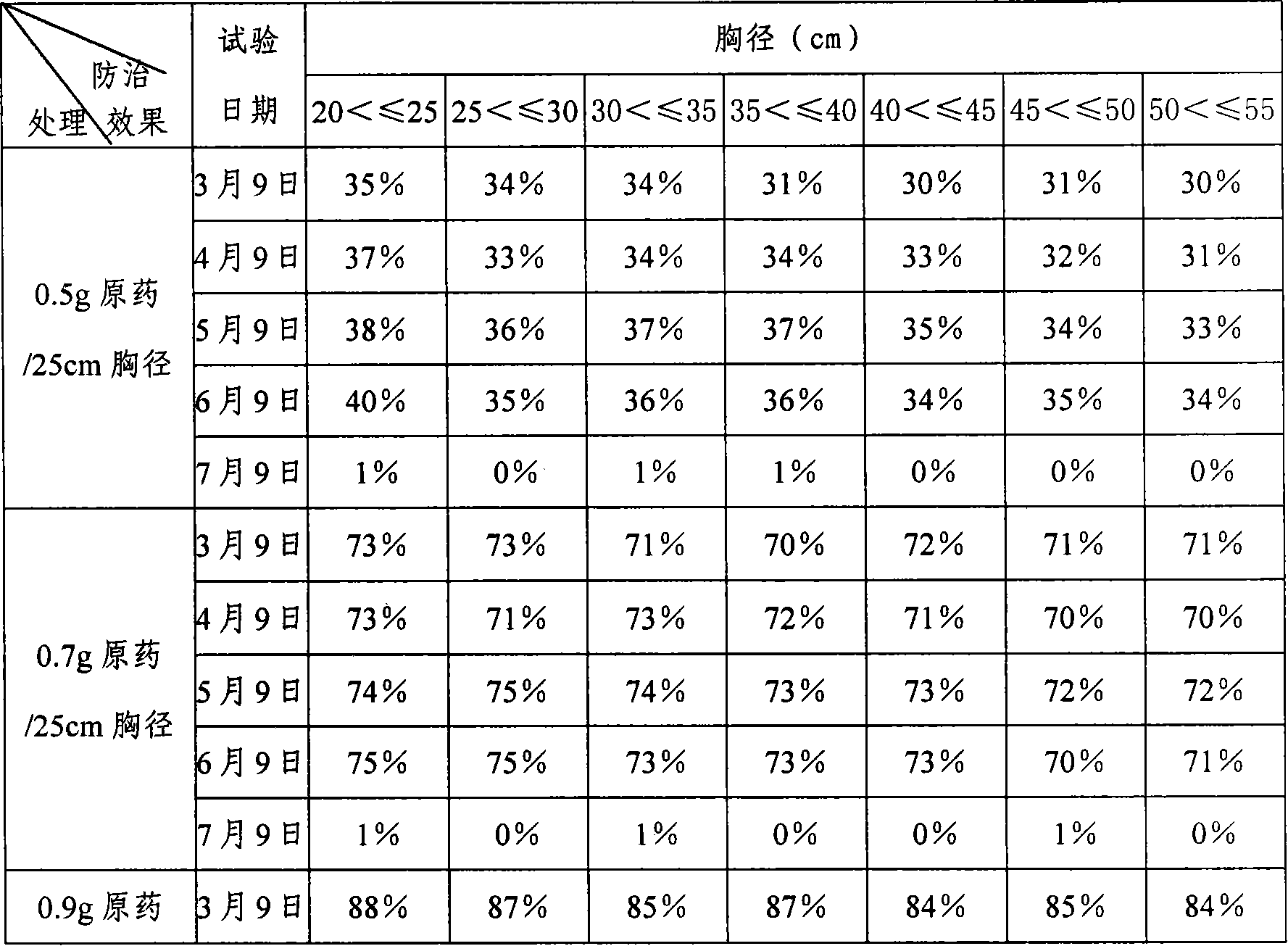Inhibitor for plant flying-batt and its use
A technology of inhibitors and flying catkins, applied in the direction of plant growth regulators, plant growth regulators, animal repellents, etc., can solve the problems of inability to be popularized and applied on a large scale, public safety, traffic safety and public facilities hazards, and reduce the control effect To achieve the effect of being suitable for large-scale promotion and application, easy to master and implement, and simple application methods
- Summary
- Abstract
- Description
- Claims
- Application Information
AI Technical Summary
Problems solved by technology
Method used
Image
Examples
Embodiment 1
[0042] Mix 6 g of gibberellin, 3 g of naphthalene acetic acid, and 1 g of indolebutyric acid to prepare the inhibitor, use 100 ml of 95% ethanol to help dissolve it, and then add 400 ml of water to dilute to make an aqueous solution.
Embodiment 2
[0044] Contain 6 g of gibberellin, 3 g of naphthalene acetic acid, and 1 g of indole butyric acid, dissolve with 100 ml of 95% ethanol, and then add 400 ml of water to dilute to make an aqueous solution, which is used to prevent and control the pollution of willow catkins.
Embodiment 3
[0046] 10 g of gibberellin, 0.1 g of naphthalene acetic acid, and 0.1 g of indole butyric acid were dissolved with 102 ml of 99% ethanol, and then diluted with 200 ml of water to prepare a solution for preventing and controlling the pollution of willow catkins.
PUM
 Login to View More
Login to View More Abstract
Description
Claims
Application Information
 Login to View More
Login to View More - R&D Engineer
- R&D Manager
- IP Professional
- Industry Leading Data Capabilities
- Powerful AI technology
- Patent DNA Extraction
Browse by: Latest US Patents, China's latest patents, Technical Efficacy Thesaurus, Application Domain, Technology Topic, Popular Technical Reports.
© 2024 PatSnap. All rights reserved.Legal|Privacy policy|Modern Slavery Act Transparency Statement|Sitemap|About US| Contact US: help@patsnap.com










